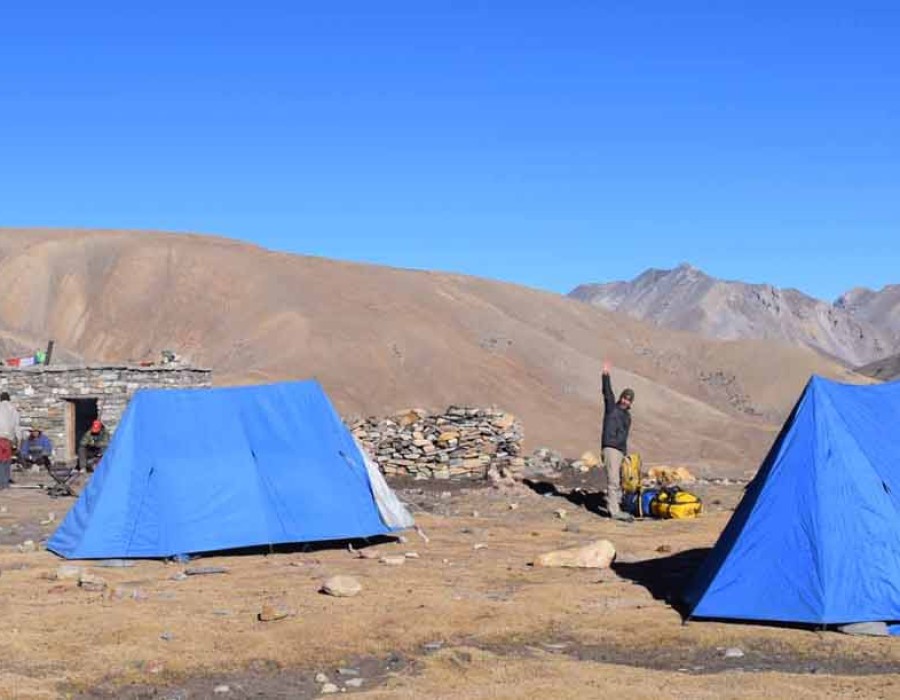Dolpo, situated in the remote mid-western region of Nepal, is one of the most isolated and untouched areas of the Himalayas. The region, often referred to as Dolpa, is a part of Shey Phoksundo National Park and offers trekkers an unparalleled experience of natural beauty, cultural richness, and adventure. Dolpo trekking in Nepal is a journey into the heart of Nepal’s wilderness, providing a glimpse into the traditional Tibetan culture and the serene beauty of the Himalayas.
Key Points
- Location: Mid-western Nepal, within Shey Phoksundo National Park.
- Altitude: Ranges from 1,500 meters to over 5,000 meters.
- Best Time to Trek: May to September.
- Duration: Typically, 18-25 days.
- Difficulty Level: Strenuous.
Natural Beauty and Landscapes
Dolpo is renowned for its breathtaking landscapes. Trekkers will encounter a diverse range of terrains, including deep valleys, high mountain passes, crystal-clear rivers, and pristine lakes. The highlight of the region is Shey Phoksundo Lake, Nepal's deepest and second-largest lake. The lake’s turquoise waters set against the backdrop of snow-capped peaks create a picture-perfect scene that is unmatched in its beauty.
Cultural Richness
Dolpo is home to the Dolpo-pa people, who practice the ancient Bon religion, a pre-Buddhist faith. The region is dotted with centuries-old monasteries, chortens (stupas), and mani walls (stone walls inscribed with prayers). The most famous monastery is Shey Gompa, also known as the Crystal Mountain Monastery, which dates back to the 11th century. Trekkers will have the opportunity to witness the traditional way of life, with locals living in harmony with nature, herding yaks, and cultivating barley on terraced fields.
Unique Wildlife
Shey Phoksundo National Park, where Dolpo is located, is a haven for wildlife enthusiasts. The Park is home to a variety of rare and endangered species, including the elusive snow leopard, blue sheep, Himalayan tahr, and the Tibetan wolf. Bird watchers can spot species such as the Himalayan monal, blood pheasant, and various birds of prey. The park's biodiversity adds to the allure of trekking in Dolpo.
Trekking Routes
There are several trekking routes in Dolpo, each offering its unique experiences. The most popular routes include:
1. Lower Dolpo Trek: This route takes trekkers through beautiful landscapes and cultural villages, providing a moderate level of challenge.
2. Upper Dolpo Trek: Known for its remote and rugged terrain, this trek is more challenging and offers a deeper exploration of Dolpo’s culture and wilderness.
3. Dolpo to Jomsom Trek: This longer route connects Dolpo with the Annapurna region, crossing several high passes and providing a varied trekking experience.
Challenges and Preparation
Dolpo trekking is considered strenuous due to the high altitudes and remote nature of the region. Trekkers need to be physically fit and well-prepared to handle the long days of walking and the potential altitude sickness. Acclimatization days are crucial to ensure safety and health. It is also important to have the proper gear, including warm clothing, a good sleeping bag, and sturdy trekking boots.
Permits and Regulations
Trekking in Dolpo requires special permits due to its location in a restricted area. Trekkers need to obtain a Restricted Area Permit (RAP) and a Shey Phoksundo National Park entry permit. It is mandatory to trek with a registered guide and in a group of at least two trekkers. These regulations help preserve the pristine environment and support the local economy.
Conclusion
Dolpo trekking in Nepal offers an extraordinary journey through one of the most secluded regions of Nepal. With its stunning natural beauty, rich cultural heritage, and unique wildlife, Dolpo is a trekker's paradise. While the trek is challenging, the rewards of experiencing such an untouched part of the world make it a once-in-a-lifetime adventure. Whether exploring the tranquil Shey Phoksundo Lake, visiting ancient monasteries, or spotting rare wildlife, Dolpo trekking is an unforgettable experience that leaves a lasting impression on all who venture into this mystical land.







Comments